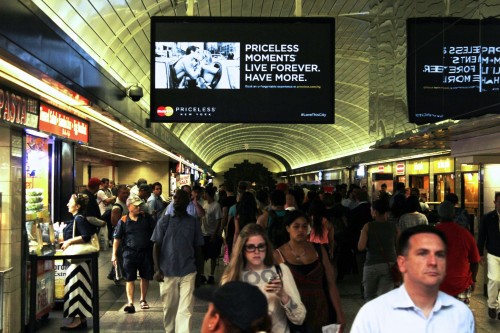Webrooming
Even when they understand the benefits of both static and digital signage, some retailers continue to worry new investments in these areas are futile given the growth of showrooming. In the constant battle with online sales, going digital indoors may not seem like enough of a weapon. Fortunately, there is an equally important trend known as ‘webrooming,’ which is changing the way customers think about bricks-and-mortar stores.
According to a survey undertaken by BuzzCity, a mobile Internet advertising company, 59 per cent of all consumers who shop online also continue to shop in stores. In many cases, they are visiting bricks-and-mortar locations to see in person what they say about retailers’ brands.
Market research firm Harris Interactive recently polled consumers about these habits. While the study found 46 per cent admitted to showrooming during the 2013 holiday season, a more significant 69 per cent were webrooming. In other words, most shoppers were looking online for pricing information, then heading to stores to make their purchases in person.
These consumers are responding to high-quality in-store experiences, including retailers’ investments in static and digital signage, along with strong customer service and other attributes. The quality of these experiences is essential to brand success and attracting online shoppers.
Answering customer priorities

Light-emitting diode (LED) displays can present a bright image, even in an environment with high ambient light levels, such as a mall corridor.
While the addition of digital signage can enhance the in-store experience, it is just as important to know how to use the technology appropriately.
The aforementioned BuzzCity poll found most consumers were looking for variety (33 per cent), ease of store navigation when searching for products (32 per cent) and discounts (24 per cent) in bricks-and-mortar shopping environments. Digital displays can address all of these priorities.
Dynamic content can showcase more combinations of products than a static sign could. Examples could include a fashion store’s ‘look book’ of various pieces of clothing, put together in different ensembles, or a grocery store’s featured recipes, listing various ingredients. The idea is to offer in-store products in interesting ways customers can apply to their own lives.
Store navigation can be enhanced by periodically displaying wayfinding information, particularly to highlight the locations of specially promoted items. In this sense, digital signage can be updated to direct customers to purchase the right items at the right times.
Along the same lines, digital signs are well-suited for announcing discounts, as they can be updated in real time as new sales periods begin and end.





